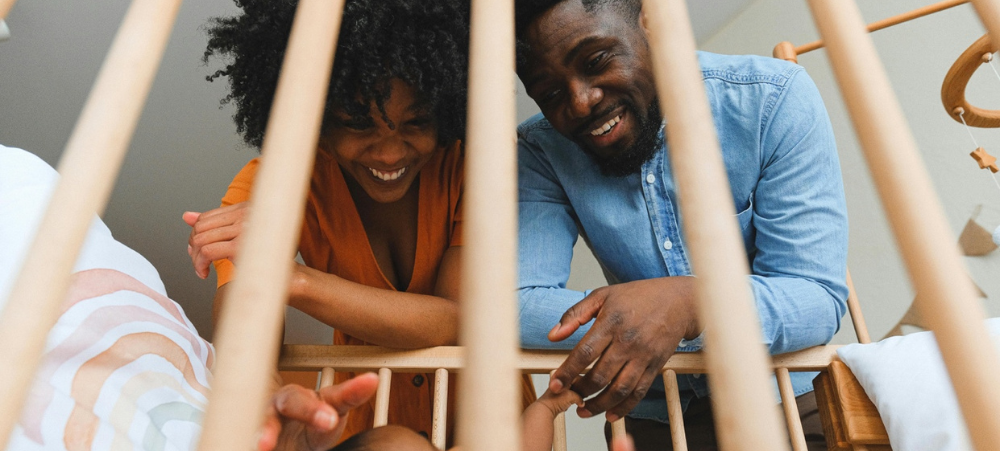Preparing for a new baby when you have a disability can be nerve-racking. You may be concerned about navigating feeding time or changing diapers. Toys and other baby items blocking your pathway can be problematic. And how will you navigate to your baby quickly when he cries?
Must-Have Items For Every New Disabled Parent
Your needs will be a little different than the needs of other parents. There are some basic standard and adaptive items you can purchase.
- A high-quality baby sling will make carrying baby easier. You can also buy a sling that supports breastfeeding, so you don’t tire while holding your baby.
- A bedside crib attaches to your bed so you can easily get to your baby with the worry of co-sleeping.
- Get a stroller system that works for you. Some disabled parents struggle with this. Review stroller videos on YouTube to discover where you might have problems. Check out “The Travel System: Disability Considerations” for insider tips from a disabled mom on managing these systems.
How To Modify Your Home For Baby … and You
Planning might be a lot more complicated. Research shows that “sophisticated planning” can help new disabled parents learn from mistakes. It may be more time-consuming than it would be for a non-disabled parent, so start working on it right away. Walk through your home as if you have a baby to get an idea of what areas might be difficult. Use your sling filled with weight to mimic carrying your child.
Here are some cost-effective safety changes you can make right away:
- Install grab bars in tubs and showers to help you while bathing your children.
- Remove anything that might make you trip, clearing areas that you’ll frequently tread after your child’s arrival.
- Use non-slip rugs and mats for safety.
- If you are visually impaired, label children’s food items with textured tape or use Braille labels for meal preparation.
- Test out baby gear with another person to ensure its safety for both you and your child. For example, a baby swing can be hazardous around a wheelchair. A stroller might be difficult to navigate over bumps, gaps, elevators, etc.
If you have the budget, you can consider large-scale renovations including widening doorways.
Other Considerations
There are other things that you might need to consider to welcome baby’s arrival. For example, if you own a service dog, you will need to retrain your dog. A baby may not be a good fit for his background and breed. Ask your dog’s trainer for help with this issue. If you have a traditional dog or get trainer approval, learn about “Preparing Your Dog For Your Baby.”
Be creative with things like messes to make it easier for you to tidy up. You might want to designate a small area for baby to play in that you can easily clean it up. You can keep the baby on hardwood floors using a baby mat to wrap toys. This will protect carpets from spit up and diaper disasters.
More Resources to Help You
Here are some additional resources to help you get started on your journey to parenthood:
- Parents.com has an entire section dedicated to everything you need to know about babyproofing your home.
- You can also hire an expert to childproof your home. They may even be able to get products for you that you can’t find. Check out this article from Baby Center to learn what a child-proofing expert can do for you.
- Visit DisabledParenting.com’s product reviews to learn what products you should be looking for.
Plan as far in advance as you can to navigate the challenges you will face so that you can welcome your baby home with a smile.
Photo credit Unsplash
- Time-Efficient Tips for Self-Care for New Parents - January 30, 2019
- Give Your Special Needs Child the Best Future Possible - October 31, 2018
- Preparing For Baby: What Disabled Parents Need to Know - April 6, 2018





